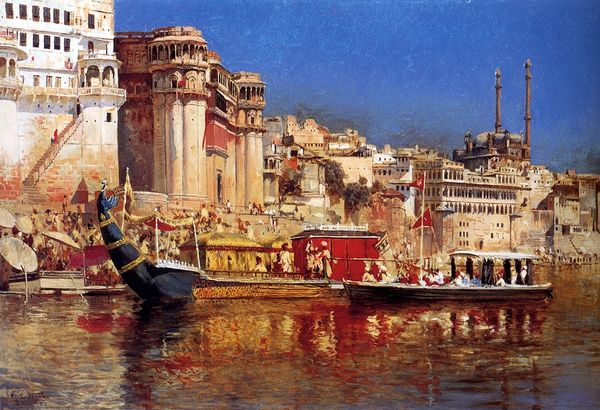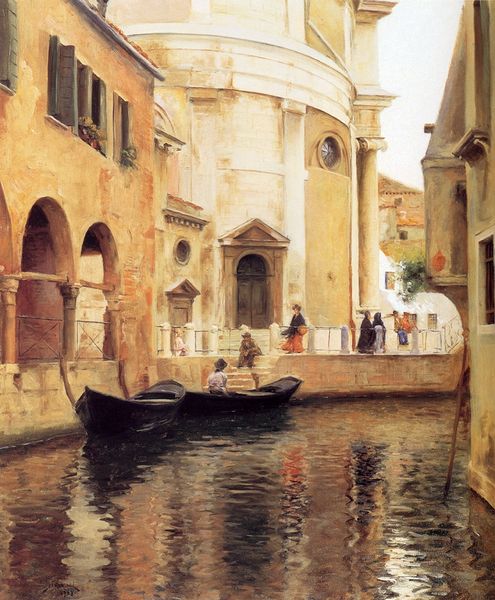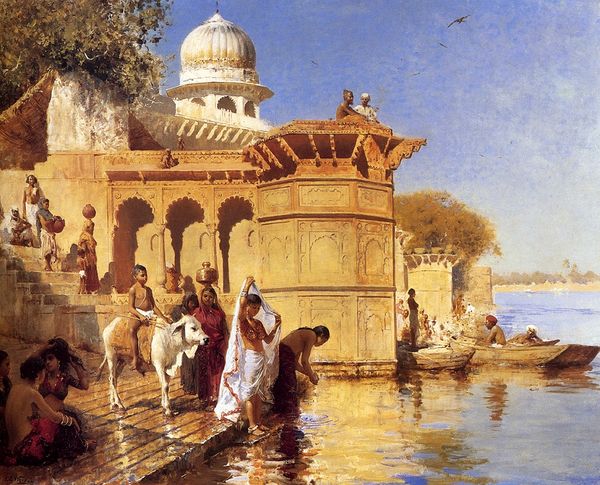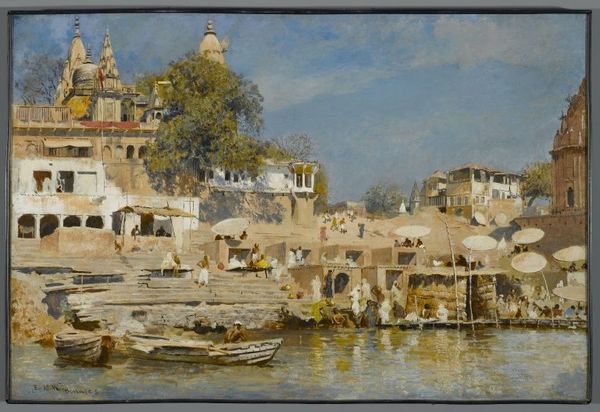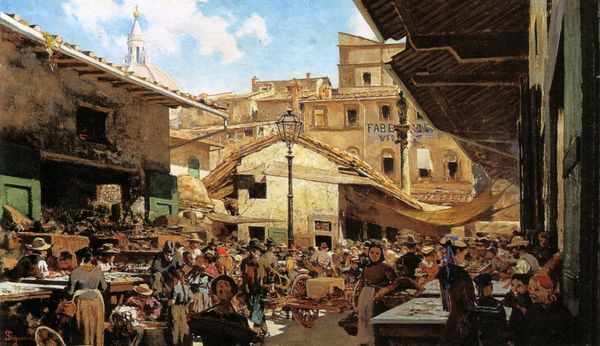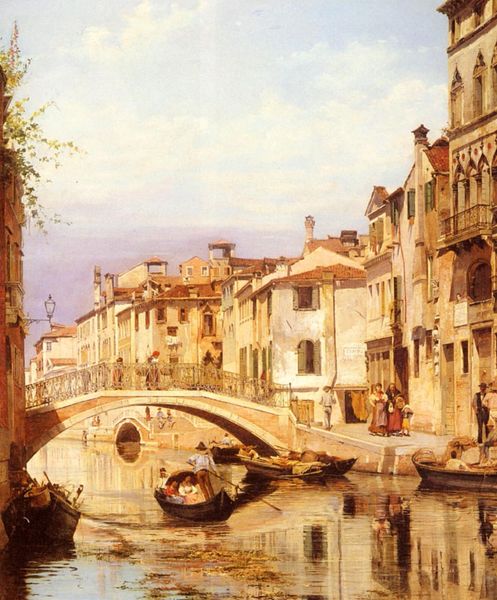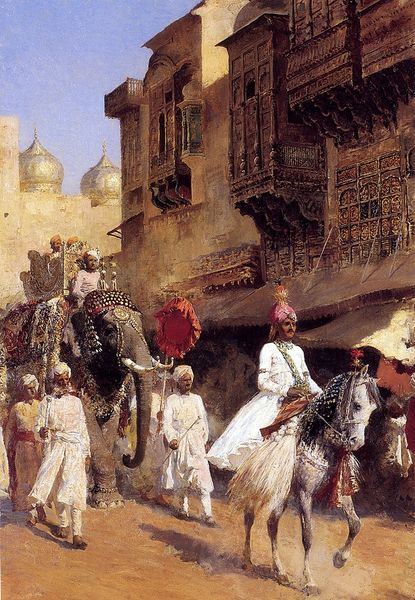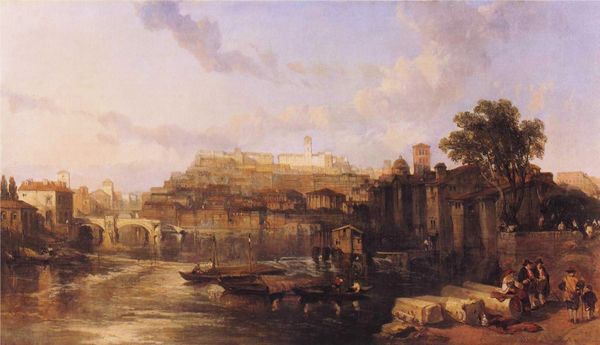
Dimensions: 73 x 99.7 cm
Copyright: Public domain
Curator: This painting, “On the River Benares,” completed by Edwin Lord Weeks in 1883, showcases a vibrant scene along the Ganges. It’s currently held in a private collection, unfortunately not always accessible to the public eye. Editor: Wow, my immediate feeling is one of heat and bustling energy. Look at the detail – you can almost feel the sun reflecting off the water. The light! The steps are filled with life! Curator: Weeks was an American Orientalist painter. We see here a representation of everyday life in Benares, now Varanasi, a city steeped in religious significance and a major commercial hub in India. He aimed to capture the “authentic” experience. Editor: Authentic for whom, though? I'm struck by how this image simplifies and perhaps romanticizes a complex reality. It’s Orientalism at play – the gaze of the West framing the East. What were his commissions, who paid him and for what? Who is omitted? Curator: Certainly, it's crucial to consider that perspective. His patrons were primarily Western audiences eager for glimpses into the exotic. Technically speaking, Weeks used oil paint to great effect, mastering light and shadow to create depth and atmosphere. Editor: The buildings, with their stacked levels and stairways leading down to the river, seem to press into the frame, amplifying that feeling of human density. Yet there is very little social interaction recorded here. How were people using the space? What tasks or ceremonies? Did he ever ask permission to record their actions for profit? Curator: What's interesting is how these works also functioned within larger imperial and commercial projects. These visual depictions influenced and justified colonial power dynamics of that period, making accessible to Europeans what seemed so distant. Editor: Absolutely. Understanding the politics of representation is crucial. And even beyond the direct political implications, paintings like this played a role in shaping cultural attitudes and biases that still reverberate today. Curator: Examining "On the River Benares" helps us understand the multifaceted exchange of cultures, a blend of curiosity, commercial aspiration, and artistic interpretation that occurred between East and West during the 19th century. Editor: Indeed, unpacking its layers allows us to critically examine not just the artistry, but also the complicated historical narratives and power imbalances embedded within. An example of how seeing and being seen can mean two very different things.
Comments
No comments
Be the first to comment and join the conversation on the ultimate creative platform.

